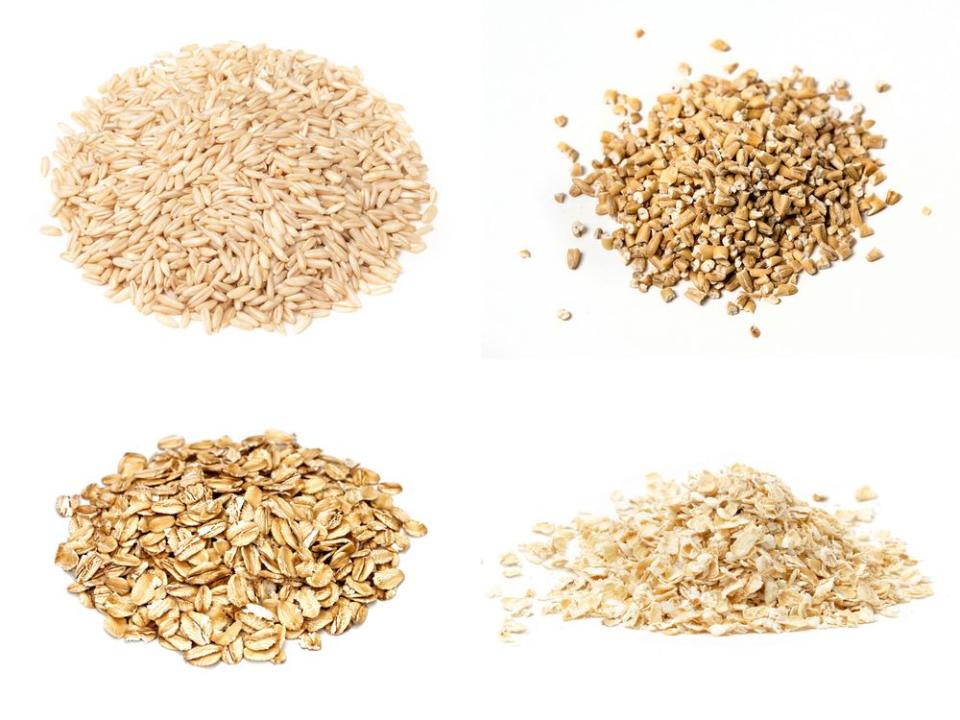We Compared the Nutrition of Every Type of Oatmeal—Here’s What We Found
It’s no secret that oatmeal is part of a healthy and balanced diet. However, of all the healthy whole grains out there, oatmeal seems to be one of the most complex. From steel-cut oats to old-fashioned rolled oats to whole oat groats, there’s a plethora of oats to choose from on grocery store shelves. The ultimate question is, which one is the most nutritious? Are all oats created equal?
While steel-cut oats and rolled oats are generally viewed as some of the most nutritious oats, instant oatmeal is more divisive. While instant oats are the saving grace of a hectic, time-crunched morning, they’re also more processed. On the other hand, less processed oats such as steel-cut oats and oat groats pack more flavor and texture, but they take much longer to cook. Yes, you can deploy clever shortcuts such as making overnight oats or using the slow cooker—but being a make-ahead breakfast warrior isn’t always doable. When time is short, can instant oats be a healthy choice? And is there one type of oat that nutritionally shines above the rest?
RELATED: Your Ultimate Guide to Oatmeal
To find the truth, we analyzed the nutrition facts of four common types of oatmeal, all of which are depicted below—whole oat groats (top left), steel-cut oats (top right), rolled oats (bottom left), and instant oats (bottom right).

To ensure consistency, we used Bob’s Red Mill oatmeal exclusively and compiled nutrition information for dry oats from the package labels. Here are the exact products we used:
We based our analysis on grams, not cups, for a reason that’s worth the explanation. Let’s take a closer look at the serving sizes of two different oat types—rolled oats and oat groats. For dry rolled oats, one serving is ½ cup or 48 grams, while for dry whole oat groats, one serving is ¼ cup or 46 grams. While the cup measurement is different, the weight is relatively similar. Here’s why—all oats start as whole oat groats, but they’re processed to cut down on cook time. As a result, oats come in different shapes and sizes. Oat groats, the least processed type of oat, resemble farro or wheat berries. Rolled oats, which are steamed and flattened, are more processed. While they are both the same oat, processing methods change their surface areas. For this reason, you can get a more accurate depiction of nutrition by relying on weight.
Now—without further ado—we present the oatmeal nutrition face off. All nutrition information comes from the individual package label and can be found on the Bob's Red Mill website.
Instant Oats Rolled Oats Steel-Cut Oats Whole Oat Groats Serving Size (dry) 32g (? cup) 48g (½ cup) 44g (¼ cup) 46g (¼ cup) Calories 130 190 170 180 Fat 2.5g 3.5g 3.0g 3.0g Saturated Fat 0.0g 0.5g 0.5g 0.5g Protein 4.0g 7.0g 7.0g 7.0g Carbohydrates 23.0g 32.0g 29.0g 30.0g Fiber 3.0g 5.0g 5.0g 5.0g Sodium 0.0mg 0.0mg 0.0mg 0.0mg Calcium 2.0% DV 2.0% DV 2.0% DV 2.0% DV Sugars 0.0g 1.0g 0.0g 1.0g
Source: Bob's Red Mill
So—what's the healthiest type of oatmeal?
Frankly, all of them. All types of oats—even instant oats—are whole grains and are good sources of fiber and plant-based protein. The nutrition only varies slightly between each type of oat, with the major differences being cook time, texture, and flavor. While instant oats may appear to have less protein and fiber, keep in mind that the serving size found on the package label we analyzed was a bit less than the other oats we used. If you want more protein and fiber from your instant oatmeal, simply adjust the serving size to ½ cup.
RELATED: The Only Basic Oatmeal Recipe You'll Ever Need
Ultimately, the type of oat you choose is completely up to you. If you prefer a sweet, nutty taste and chewy consistency, try steel-cut oats. If you like your oatmeal creamy and smooth, then instant oats are your game. And if time is a factor, instant oats make a perfectly suitable healthy breakfast or quick energizing snack.
When buying oatmeal, always check the ingredient list. No matter the type, there should only be one ingredient listed—whole-grain oats. Be wary of flavored instant oatmeal, as it can pack added sugars, extra sodium, and artificial ingredients. Instead, opt for plain instant oatmeal and top with a variety of nutrient-packed, sweet and savory toppings such as fresh berries, almond butter, Greek yogurt, sliced avocado, or a fried egg.

